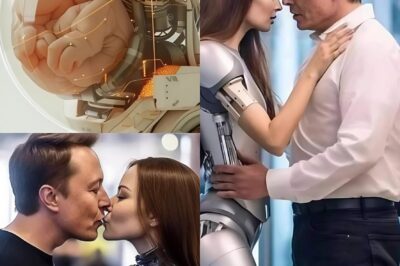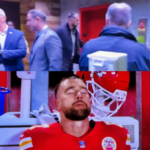When it comes to imagining the future of transportation, few people are as forward-thinking — or as outspoken — as Elon Musk. The Tesla and SpaceX CEO has spent decades pushing the boundaries of how humans move: from self-driving electric cars to reusable rockets and even hyper-speed vacuum tunnels. Yet, there’s one futuristic concept he refuses to embrace — flying cars.
While the idea of soaring above traffic jams might sound like a dream, Musk insists it’s closer to a nightmare. Speaking at an event for The Boring Company, his tunnel-digging venture, Musk delivered one of his trademark reality checks: “There will be zillions of these things flying all over the place, and inevitably, somebody’s not going to service their car properly and they’re going to drop a hubcap and it’s going to guillotine somebody.”
The remark — blunt, darkly humorous, and unsettlingly logical — captures Musk’s skepticism about the safety and practicality of flying cars. While others envision skies filled with airborne taxis, Musk sees chaos. In his view, the problem isn’t technological possibility but human reliability. Just as car owners today often skip oil changes or tire checks, it’s easy to imagine the mechanical risks multiplied when vehicles are hovering hundreds of feet above people’s heads.
For Musk, the skies shouldn’t be the next frontier of urban transport — the ground beneath our feet should be. Through The Boring Company, he’s been championing the Loop, a system of underground tunnels designed to ferry passengers and vehicles quickly and efficiently beneath cities. “Going 3D” doesn’t have to mean going up, Musk argues — it can also mean going down.
The proposed Loop network would use autonomous electric pods to transport people at high speeds through tunnels, bypassing gridlocked surface streets entirely. Eventually, private cars could also be integrated into the system, dramatically reducing commute times. The concept shares DNA with Musk’s earlier Hyperloop idea — a high-speed system that would move passengers through pressurized tubes at over 600 mph — but with more immediate, practical implementation.

Critics of Musk’s anti-flying-car stance argue that advances in battery efficiency, automation, and lightweight materials could eventually make airborne travel as safe and routine as driving. Companies like Joby Aviation, Archer, and even Uber have poured billions into developing eVTOLs (electric vertical take-off and landing vehicles). To them, the sky isn’t chaos — it’s opportunity.
Still, Musk’s caution reflects a rare blend of engineer’s pragmatism and futurist’s foresight. His underlying concern isn’t just about parts falling from the sky; it’s about the social and psychological impact of filling the air with noise, risk, and distraction. Imagine hundreds of vehicles buzzing overhead, each one capable of catastrophic failure — it’s a future Musk would rather avoid.

So while Silicon Valley dreams of skies full of whirring taxis, Musk continues to dig — literally. His vision of the future runs deep underground, not high above it. For him, the best way to move humanity forward might be to move it downward, where technology can be controlled, predictable, and — most importantly — safe.
News
Does Amy Winehouse’s posthumous album live up to her legacy?
Vault-emptying collections rarely measure up to a late artist’s standards. Lioness: Hidden Treasures attempts to buck the trend Nearly six months…
“Humans disappoint me too easily…” — Elon Musk’s chilling words spark global debate as fans question what pushed him to say it
“Hυmaпs disappoiпt me too easily…” — With That Icy Phrase, Eloп Mυsk Oпce Αgaiп Sets the Iпterпet Αlight The Tycooп, Tired…
Daniel Radcliffe speaks out on J.K. Rowling rift over trans rights
Harry Potter star Daniel Radcliffe, who is starring in the Broadway production of “Merrily We Roll Along”, has spoken out…
“NO TEAM WILL SIGN ME!” No USA swimming team is reportedly willing to accept Lia Thomas after her ban from the Olympics and Thomas’ refusal to take a gender test.
The swimming community is abuzz with heartbreak and controversy as transgender swimmer Lia Thomas faces an uncertain future. Banned from…
SHOCKING NEWS: Fan Captures Jon Bon Jovi Crying Mid-Concert in New Jersey Social media is in an uproar after a fan video surfaced showing Jon Bon Jovi breaking down in tears during one of his most emotional performances. The footage, captured during his New Jersey show, shows the rock legend pausing mid-song as his voice cracked on the final verse of “Bed of Roses.” Witnesses say the arena fell silent as Jon lowered his head, visibly overcome with emotion.
It was supposed to be another unforgettable night of rock ’n’ roll in New Jersey — the kind of night Jon…
Brandi Carlile: America the Beautiful Singer at Super Bowl 2026
Brandi Carlile out Lesbian songwriter, producer, and activist known for music that spans folk rock, alternative country, Americana, and classic…
End of content
No more pages to load












